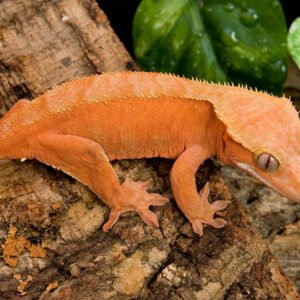crested gecko enclosure
Essential Components of a Crested Gecko Enclosure
crested gecko enclosure ,Designing an appropriate enclosure for crested geckos requires careful consideration of several key components that directly influence their health and well-being. The ideal enclosure for these reptiles is a vertical terrarium, as crested geckos are arboreal by nature and thrive when provided ample climbing space. A minimum size of 20 gallons is recommended for adult geckos, although larger sizes are preferable to ensure a comfortable environment. Glass terrariums offer several advantages, including easier temperature regulation and visibility. In contrast, plastic enclosures can provide lighter alternatives but may lack adequate ventilation if not properly designed.
Humidity control is another critical aspect of a crested gecko’s habitat. These creatures require humidity levels between 50% and 80% to stay healthy. It is advisable to integrate a misting system or use a hygrometer to monitor humidity levels effectively. Moreover, the use of substrates such as coconut fiber or moss can help maintain this moisture, promoting a stable environment. Proper ventilation is equally essential to prevent mold growth and ensure proper air circulation, which can be achieved through strategically placed vents in the enclosure.
Temperature regulation plays a vital role in the comfort of crested geckos. The enclosure should have a temperature gradient, with a warm side maintained at about 75 to 80 degrees Fahrenheit and a cooler side at approximately 70 degrees Fahrenheit. This allows the gecko to thermoregulate effectively, an essential behavior for their overall health. Furthermore, incorporating features that mimic their natural habitat, such as climbing branches and hiding spots, not only fulfills their behavioral needs but also reduces stress levels. Overall, a well-designed crested gecko enclosure carefully considers these essential components to promote a thriving environment for these unique reptiles.
Decorating Your Crested Gecko Enclosure
Creating a visually appealing and functional environment for your crested gecko is crucial for its well-being. The decoration of the enclosure should not only enhance its aesthetic appeal but also provide a safe and stimulating habitat. Choosing the right substrate is the first step in this process. Suitable substrates include coconut fiber, reptile carpet, or paper towels, which ensure moisture retention while being easy to clean. Avoid substrates that can be ingested or may pose health risks, such as loose sand or bark that can cause impaction.
Incorporating natural elements into the enclosure can significantly enrich your crested gecko’s environment. Live or artificial plants, branches, and rocks not only mimic their natural habitat but also provide essential hiding spots and climbing opportunities. Plants such as pothos, bromeliads, and spider plants can thrive in terrariums and are safe for crested geckos. When selecting branches, ensure they are non-toxic and free of chemicals. Varying the height of these elements allows for the utilization of both vertical and horizontal space, catering to the gecko’s climbing instincts.
Moreover, maintaining cleanliness and hygiene is imperative within the enclosure. Regularly removing waste, uneaten food, and shedding remnants will help prevent harmful bacteria buildup. Scheduled deep cleans will not only keep the environment healthy but can also provide the opportunity to rearrange decorations, which may stimulate the gecko’s curiosity. Additionally, consider using removable decorations to make cleaning more manageable. By thoughtfully decorating your crested gecko’s enclosure, you can create a beautiful, stimulating space while prioritizing safety and cleanliness.
Showing the single result
-
Geckos for Sale
crested gecko
Original price was: $89.00.$69.00Current price is: $69.00. Add to basket

